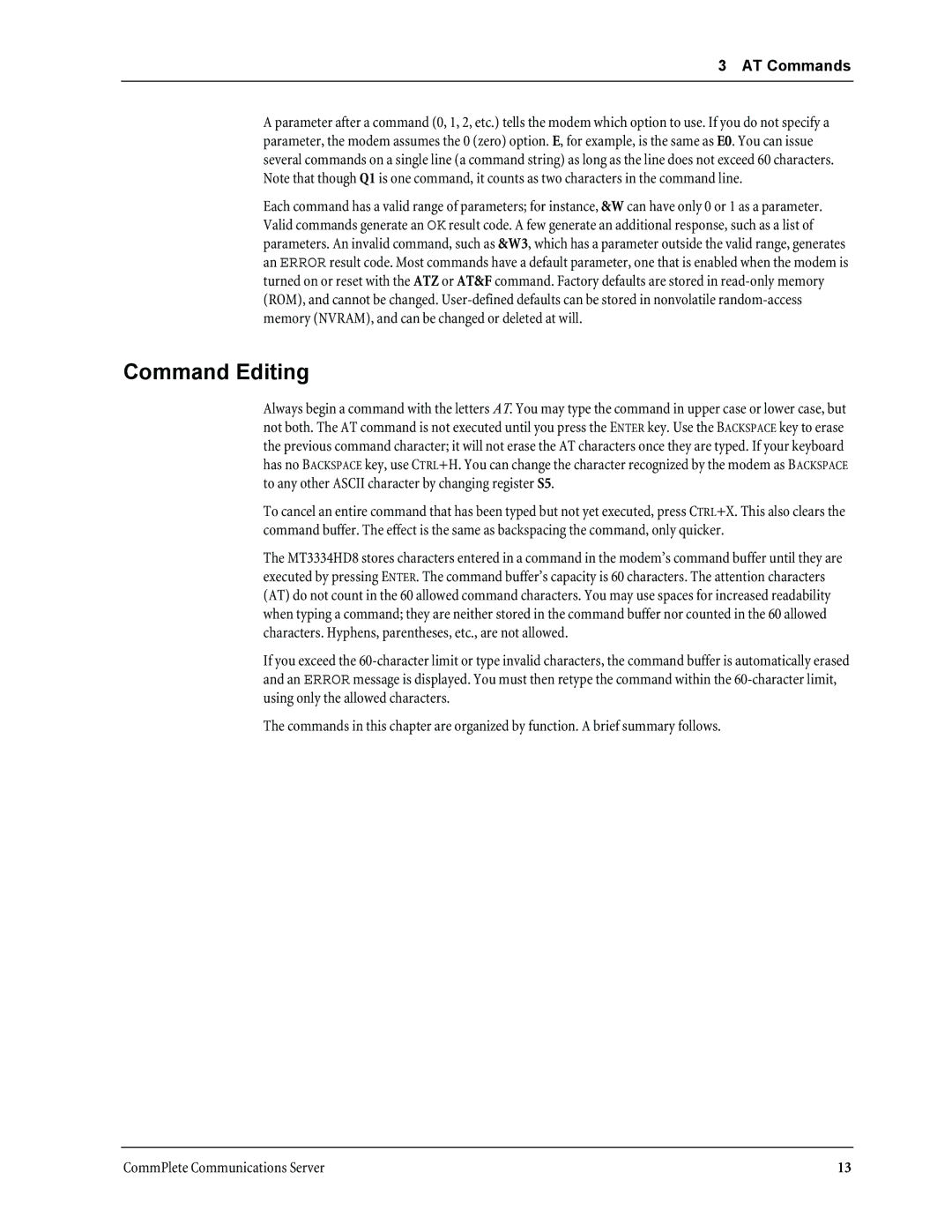
3 AT Commands
A parameter after a command (0, 1, 2, etc.) tells the modem which option to use. If you do not specify a parameter, the modem assumes the 0 (zero) option. E, for example, is the same as E0. You can issue several commands on a single line (a command string) as long as the line does not exceed 60 characters. Note that though Q1 is one command, it counts as two characters in the command line.
Each command has a valid range of parameters; for instance, &W can have only 0 or 1 as a parameter. Valid commands generate an OK result code. A few generate an additional response, such as a list of parameters. An invalid command, such as &W3, which has a parameter outside the valid range, generates an ERROR result code. Most commands have a default parameter, one that is enabled when the modem is turned on or reset with the ATZ or AT&F command. Factory defaults are stored in
Command Editing
Always begin a command with the letters AT. You may type the command in upper case or lower case, but not both. The AT command is not executed until you press the ENTER key. Use the BACKSPACE key to erase the previous command character; it will not erase the AT characters once they are typed. If your keyboard has no BACKSPACE key, use CTRL+H. You can change the character recognized by the modem as BACKSPACE to any other ASCII character by changing register S5.
To cancel an entire command that has been typed but not yet executed, press CTRL+X. This also clears the command buffer. The effect is the same as backspacing the command, only quicker.
The MT3334HD8 stores characters entered in a command in the modem’s command buffer until they are executed by pressing ENTER. The command buffer’s capacity is 60 characters. The attention characters (AT) do not count in the 60 allowed command characters. You may use spaces for increased readability when typing a command; they are neither stored in the command buffer nor counted in the 60 allowed characters. Hyphens, parentheses, etc., are not allowed.
If you exceed the
The commands in this chapter are organized by function. A brief summary follows.
CommPlete Communications Server | 13 |
